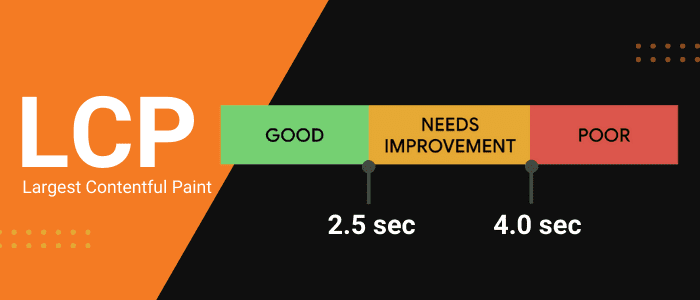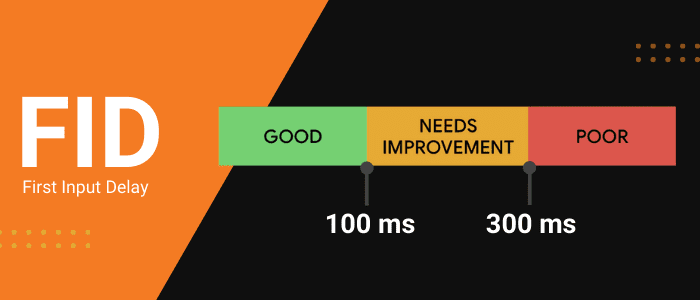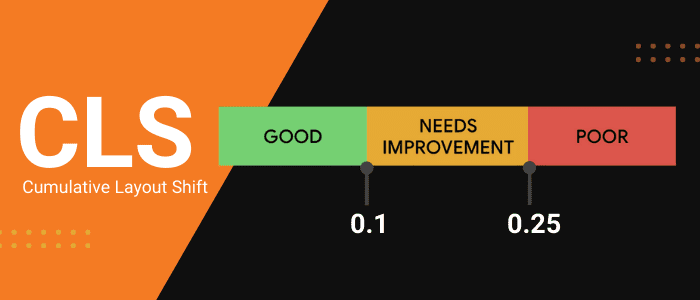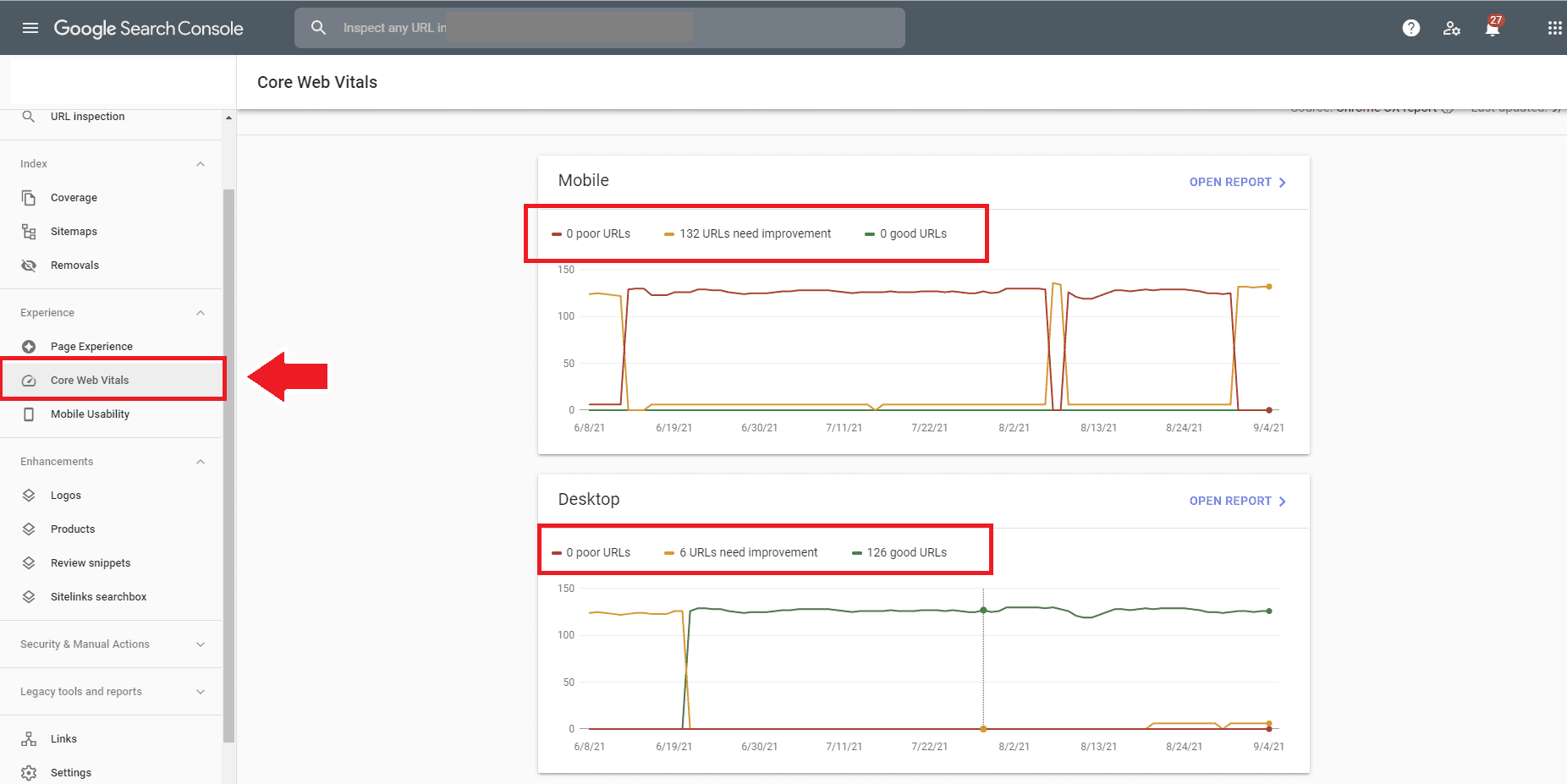

As part of Google’s Page Experience update, Google has introduced Core Web Vitals as new measurements of user experience (UX). These are Google’s latest ranking signals and they are not to be ignored.
We can confirm that these new metrics are well and truly in effect, with ranking positions being affected across multiple industries in Google search results.
If you haven’t reviewed your site’s Core Web Vitals, we highly recommend doing so now. Our team of SEO specialists have put together a handy guide to help you understand what exactly Core Web Vitals are and why they are so important to improve.
Put simply, Core Web Vitals are three different metrics used by Google to measure how good or bad your website’s user experience is.
User experience ranking signals are not a new concept, Google already uses speed, mobile-friendliness, HTTPS security and intrusive interstitial guidelines as page experience ranking signals.
What makes Core Web Vitals different is that they are advanced metrics that emulate how humans use search, which means they give an accurate account of how users experience your website.
Each metric measures a different aspect of site performance and gives you three grades, Good, Needs Improvement or Poor, for both mobile and desktop.

LCP measures how long it takes for the largest content (either image, video, or text) on a page to load. So basically, the time it takes to see visual elements on the page.
While this might sound complicated, it makes complete sense to measure this. We all know how frustrating a blank page is, right? The faster we see stuff appear on the page the better. LCP gives you a score on how fast your pages provide users with something to look at.
A good score is 2.5 seconds or faster. This is what Google has determined as the ideal time to provide a good experience to users.

The next Core Web Vital measures how fast the page responds when users interact with elements on the page. So it’s essentially the time difference between a user taking an action and the page responding to the user’s output. This interaction could be a click, a scroll or a keypress.
Google has identified that a page that is slow to react to interactions made by users provides a poor user experience. The ideal FID score is less than 100ms.

CLS measures the visual stability of a page. If you’ve ever landed on a page, scrolled through and suddenly the layout shifts and you accidentally click on a button, then you’ve experienced page instability.
It’s frustrating when things suddenly move on a page, so it makes sense to make this a user experience ranking signal. You’ll get a good score for CLS if it’s 0.1 or under.
The aim of the game for Google is simple – to create a better web experience for its users.
While Google can control the user experience of its search engine, it has less control once users click on a website listing.
It reflects poorly on them when they send users to websites with poor user experiences. So if they want to stay the world’s most used search engine, they need to push website owners to improve the user experience of their websites.
The consequence of your website performing poorly across these user experience metrics is that Google will bump down your website in search results. Core Web Vitals are the perfect way for Google to weed out those websites that provide poor UX and deliver those to users that provide the best UX experience.
We get it, keeping up with all Google’s algorithm updates and ranking factors can be overwhelming.
But these are ranking signals that cannot be ignored, and there’s a good reason for it.
Sure, improving your Core Web Vitals will help to protect your rankings and even improve them, but the biggest reward goes beyond organic rankings.
Even if organic search isn’t the main way customers find you, improving your user experience is still very important.
Improved rankings are a bonus, but the real payoff in investing in improving your user experience is simple – users are more satisfied with their experience and are more likely to perform the desired action, whether that be a sale or filling out an enquiry form.
It doesn’t matter what channel they come from (Facebook, TVC), because the end goal is the same. The goal is to convert, and a good user experience helps customers to reach that end goal.

The first place to review your Core Web Vitals scores is in Google Search Console (GSC). In here, you will see a grade for each Core Web Vital for all URLs that are currently indexed. This is a great starting point for a quick review of your site’s performance across each metric.
If you don’t have Google Search Console set up, we can help with the process. Here’s a link to our handy guide on how to provide us with access to your Google Search Console.
Google may not have collected enough data yet in order to see your Core Web Vitals scores in GSC. If this is the case, you can visit Google’s PageSpeed Insights tool, which will also provide information on your vitals with recommendations on what you can do to improve them.
Improving Core Web Vitals and other page experience ranking signals requires technical SEO specialists to identify issues and web developers to implement the recommendations.
The first step to optimising your site’s user experience starts with a full website SEO audit. We recommend this option as it takes a holistic approach, looking to improve more than just Core Web Vitals but other user experience signals as well.
Core Web Vitals allows you to keep on top of your website’s UX for the best chance of good rankings.
Beyond this, improving your Core Web Vitals will improve your site’s user experience, which will enhance your website’s performance.
Never underestimate the power of delivering a great user experience.
Avoiding or ignoring Core Web Vitals and other user experience ranking signals is not worth the risk. Businesses that invest in improving their UX will see a long-term return on investment and will stay ahead of their competition.
At Concise Digital, we are Google Premier Partners, with a full team of technical SEO specialists and developers under one digital roof.
Rather than having to seek out a web development agency to make these improvements, our SEO consultants will liaise with our in-house development team to get the job done properly.
Together we will ensure your website is fast, has healthy Core Web Vitals and performs better than your competitors.
If you’d like to find out how we can help you optimise your site’s core web vitals, give us a call on 1300 226 624 or send through an enquiry.